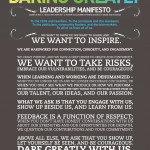 This is the first of a series of ten blog posts where I will expand on each of the ten keys to high performing teams that I have identified. Watch out for future posts over the coming weeks. But first off, here are the Ten Keys to High Performing Teams:
This is the first of a series of ten blog posts where I will expand on each of the ten keys to high performing teams that I have identified. Watch out for future posts over the coming weeks. But first off, here are the Ten Keys to High Performing Teams:
1. Make sure you have the right people in the right jobs
Recruit on personality and values more than skills and experience. Unless you are recruiting brain surgeons or airline pilots, in most jobs the cost of training someone is far less than the cost of employing someone who isn’t a fit. Tools like Talent Dynamics can help identify the right person for a role. Read more …
2. Crystal clarity on responsibilities and what is expected
There’s a big difference between having a job description and having crystal clarity in your own head about what is expected of you and what you are ultimately responsible for. Read more …
3. Align personal goals with organisational goals
People’s personal goals are much more motivating to them than the organisation’s goals. Leaders who make the effort to discover what those personal goals are and then find ways to align them with the organisation’s goals can expect much greater engagement. Read more …
4. Personal warm relationships
You are much more likely to work hard and go the extra mile for people you care about. You are much more likely to let down people you don’t care about. Read more …
5. Catching people doing things right
When the focus is on avoiding being caught doing something wrong, performance tends to stabilise at a minimum acceptable level. This is usually a fraction of what people are capable of. Research shows that when you recognise good behaviour at least four times as much as poor behaviour, performance shifts gear and can go through the roof. Read more …
6. Daily feedback/accountability conversations
We are hard-wired to work towards goals and we want to know how we are tracking towards those goals. All the research on performance shows that the more instant the feedback the more motivated we are. Read more …
7. Value individuality, diversity, unique gifts
We are each one-of-a-kind unique individuals who think differently, yet in many workplaces we feel we have to leave our individuality at home and conform. Embracing diversity and individuality encourages people to bring more of themselves to work. It encourages creativity and higher engagement. Read more …
8. Constructive (not destructive) handling of conflict
Conflict is inevitable and can be a source of growth and creativity. But when people don’t know how to handle conflict constructively it can lead to toxic mistrust and people feeling unsafe, judged and bullied – all of which kills motivation. Read more …
9. Conducive working environment
The interaction between the environment and the subconscious is powerful. Different spaces and colours are conducive to different tasks, such as focused concentration, creativity, analysis, meetings etc. Read more …
10. Identify and overcome dysfunctional habits (eg procrastination)
Dysfunctional habits such as procrastination have deep roots. It takes a combination of structural adjustments (such as Dave Allens GTD system) and psychological insight. Toxic Shame is a core issue for many people which keeps them from reaching their true potential through addictive or self-destructive behaviour.
Mike Lowe
Helping individuals and teams get into flow






Great points… I can relate to all but one… To “Align personal goals with organisational goals” .. .this one is tricky… in the world of innovation I try to be careful with this one to the point that because we are different we are helping to re-shape, readjust companies … and many times, because we have different goals we can help to change the borders of the business and create new opportunities … it is the power of communication that can help up is being able to balance your personal and corporate goals…
Thanks for commenting Violeta. I agree that it is tricky to align personal goals with organisational goals. I will expand on this in a later blog. Your last sentence is really the core of the matter – using the power of communication to help balance personal and corporate goals. In many organisations there is no place for conversations which include personal goals.
Valuable 10 points,Mike.We may not readily get the desired team to achieve the goal or to deliver the result.Train the donkeys and win the race….so goes a saying in our part of the world and I believe we can.My emphasis will be on motivation and commitment to work.Understanding of organisational goal is indeed very vital.Having personal goal is not a sin.Both can go together and compliment each other.In such an ambiance,there will not be confrontation but only co-operation.
Taking responsibility and fixing accountability will no longer be the contentious areas, where there is plenty of appreciation and recognition.People must feel valued and important in any set up irrespective of their cadre.When these things happen the conducive working environment,will be round the corner.
Looking forward to the rest of the series and thank you Mike for the ’10 COMMANDMENTS’